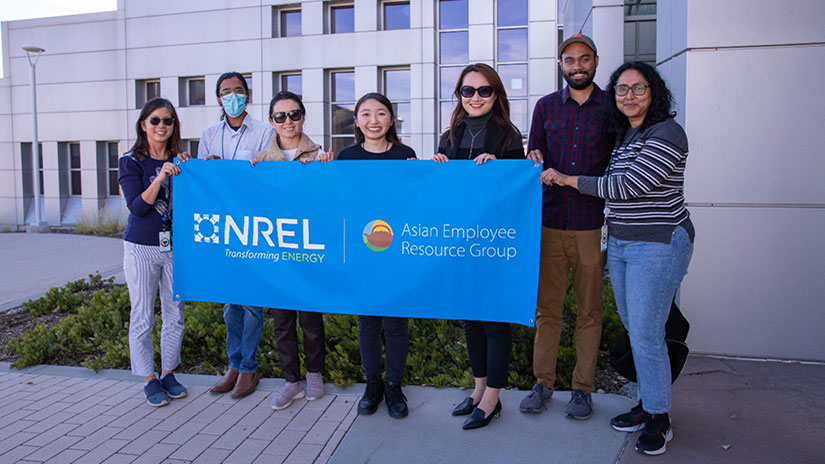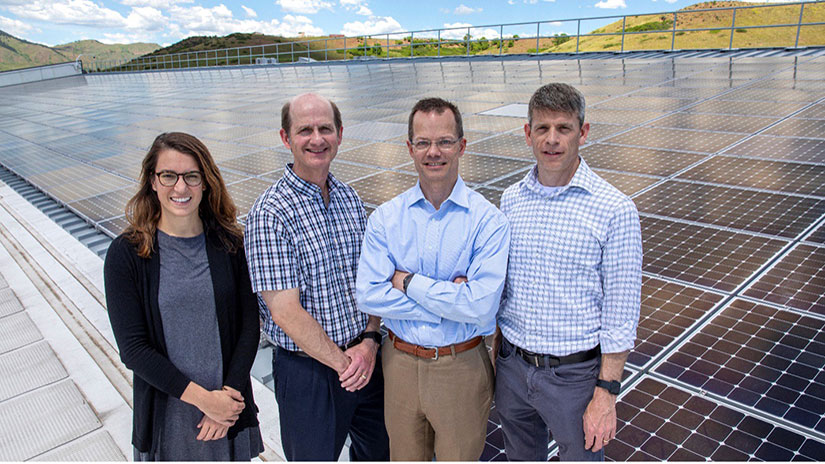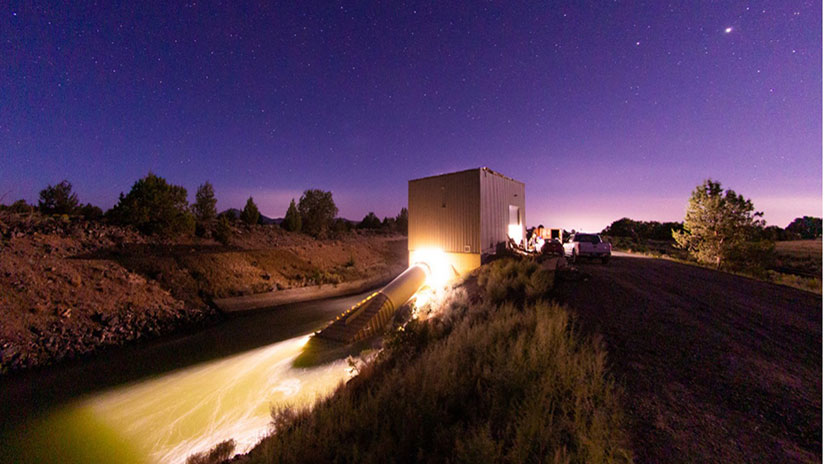Do We Still Need Hydropower?
The Truth Behind Hydropower’s Role in Our Battle Against Climate Change
In 2022, journalist Ezra Klein posed a question to the Reddit community: “Why is it that no one seems to talk about hydropower anymore?”
It is a good question. And a handful of Redditors answered. Dams have displaced people, one said. It is too hard to build more, said another. Think of the fish, said a third.
They are not wrong. Some hydropower plants—especially the big dams of yore—disrupted rivers, wildlife, and people. Yet hydropower is also one of the most affordable, tried-and-true ways to generate clean energy. And we need clean energy, lots of clean energy, to reduce greenhouse gas emissions, staunch climate change, and, ultimately, protect our rivers, wildlife, and people.
“I’m honestly not sure what I feel about it,” one Redditor wrote, in what might be the most common American attitude toward hydropower.
So, do hydropower’s benefits outweigh its downsides? Do we still need our oldest form of renewable energy? Or should we remove all the dams?
Why We Need To Talk About Hydropower
When people do not talk about hydropower, one of two things can happen. Hydropower slips into obscurity, tumbling into the forgotten land of landlines, boxy television sets, and floppy discs. Or people form their own opinions, based on the (sometimes limited) information they have.
Of course, some of those opinions are deeply justified. Many Tribal nations depended on rivers and their salmon or steelhead trout populations for more than just food. For many Tribes located in the Columbia River Basin, including the Nez Perce, Umatilla, Warm Springs, and Yakama Tribes, salmon continues to be a core part of their spiritual and cultural identity. Many still use salmon in their religious services, celebrate the annual salmon run, and feel a sense of duty to protect the species.
“Without salmon returning to our rivers and streams, we would cease to be Indian people,” the Columbia River Inter-Tribal Fish Commission writes on their website.
Thushara De Silva, a hydropower researcher at the National Renewable Energy Laboratory (NREL), understands their concerns.
“I have seen the same thing in my country as well,” said De Silva, who is originally from Sri Lanka. “When I’m working with, for example, Tribal communities, they are like, ‘Hey, our grandfathers and everybody depend on this fishing. And the dams destroy everything.’ So yeah, I get it.”
In the Columbia River Basin, salmon and steelhead trout populations have been rapidly declining. The decline initially began as a result of impacts from the commercial fishing and logging industries, then dams built more than 50 years ago contributed to the problem. Now, climate change is creating yet another challenge for the fisheries of the region. This puts the hydropower industry in a complicated position of needing to balance the growing demand for renewable, carbon-free energy sources with mitigating impacts to the environment.

De Silva, along with the U.S. Department of Energy’s Water Power Technologies Office and Communities Local Energy Action Program, are working with Tribes and environmental scientists to figure out how to balance the need for hydropower and clean energy with the need for healthy rivers (other blended groups, like those behind Stanford University’s Uncommon Dialogues, are also searching for ways to achieve that delicate balance).
In Sri Lanka, De Silva witnessed the unproductive conflict that resulted from leaving Indigenous voices out of these conversations.
“Some folks do not have—and they deserve—a seat at the table in discussions about hydropower and the clean energy transition,” De Silva said. “Sometimes they might come to a compromise. Then we can go together on this clean energy path.”
For De Silva, that path is clear: “The grid is not ready to operate without hydro,” she said. “Altogether, hydropower is essential.”
Why Hydropower Is Essential, Especially Right Now
In 2022, humans burned enough fossil fuels to release about 40 billion tons of carbon dioxide into the atmosphere. Those are literal tons: Humans let loose about 1.5 billion fully loaded semitrailer trucks worth of carbon.
Switching to 100% clean energy means we keep all that carbon out of our atmosphere. And we are getting there. Solar panels and wind turbines are more affordable and efficient than ever before. But a clean energy grid also needs a clean energy partner that can balance out grid fluctuations when the sun sets and winds slow.
“Everybody has the rainy-day fund. And hydro’s going to provide that. It’s an insurance policy,” said Michael Ingram, a chief engineer at NREL who has worked in hydropower for decades, mostly in rambunctious East Coast rivers.

Many hydropower facilities can start and stop within minutes or even seconds. And, like thermal power plants—coal and the like—hydropower can provide something called grid inertia: If a system failure disrupts the power grid, the plant’s large machinery keeps moving, like a stalled car on a hill, so communities can continue to get some power while the glitch gets fixed.
As fossil fuel plants retire, the grid will lose many of its traditional sources of grid inertia, potentially making it more vulnerable to disruptions. Hydropower—as well as geothermal, concentrating solar power, or biomass power plants—could provide that inertia. And, in many cases, hydropower already does.
For example, Ingram said he cannot imagine how some East Coast utilities could reboot the grid during a blackout—also known as a black start—without hydropower. “Most utilities pray every night before they go to bed that they'll never need it,” Ingram said. “But when they do, they have to have it.”
But hydropower can also do way more than just generate clean electricity.
A clean energy grid will need significantly more energy storage than we have today. One kind of hydropower, called pumped storage, already accounts for about 96% of the U.S. grid’s energy storage. Batteries are catching up, but, because most batteries cannot store as much energy as pumped storage hydropower reservoirs, the grid will likely need both. Pumped storage hydropower is also one of the most climate-friendly energy storage options, and damp, mountainous western states, especially Alaska, could potentially reach their renewable energy goals faster if they have pumped storage hydropower to lean on.

Hydropower plants—and the close to 90,000 dams that cannot generate electricity—can also provide irrigation for agriculture, recreation, water supplies, and flood control by corralling rampaging waters in their reservoirs.
Of course, some dams might have to go. Several, like the Klamath dams on the border of Oregon and California, are old and pose a safety risk. But with repairs, maintenance, modern upgrades, and a few small turbines, some of those inert 90,000 dams could boost our clean energy production. And they could do that with minimal negative environmental impacts and powerful climate benefits.
“I think immediate action is not removing the dams,” De Silva said. “Let’s minimize those negatives. Evaluate environmental impacts and avoid, minimize, mitigate.”
The New Hydropower
One thing is for sure: The future of U.S. hydropower is unlikely to include more river-blocking dams. The question is: How do we make the most of what we have?
Today, hydropower plants and technologies look almost nothing like their historical counterparts. New technologies, like fish-friendly turbines and fish passage devices, help fish migrate and spawn. In a preliminary study, one novel turbine design showed a 100% survival rate for the American eel passing through. And some types of hydropower, like closed-loop pumped storage and run-of-river hydropower, do not block rivers.
The future of hydropower should be built on careful conversations and research—lots of research. De Silva and other hydropower experts are modeling how to balance multiple factors, like changes in rainfall, the grid’s increasing reliance on renewables, fish populations, other aquatic wildlife, water supplies, and electricity needs with Tribal sovereignty, clean energy goals, and overall environmental security.
“The bottom line is that hydro is an enabler for the energy transition,” Ingram said. “You can’t easily take away reliable energy resources. I’ve never seen a hydro plant that wouldn’t work almost 365 days a year—just open the valve, let the water go, and it’ll make electricity.”
There is room for hydropower to safely grow, too—and not just by adding power to some of those 90,000 dams. Some of today’s hydropower plants could store more energy with a technique called pump back: Reverse the turbines, and water can flow back upstream, ready to generate more energy. And abandoned mining caverns could be repurposed as pumped storage hydropower reservoirs, detached from naturally flowing rivers, so they have minimal to no environmental impacts.
“Basically, the grid is changing,” De Silva said. “What the grid needs is changing, and what the grid needs from hydropower is also changing.”
For now, the grid needs hydropower. But let’s keep the conversation flowing.
Find out what the future of hydropower could look like in the 3D Renewable Energy Discovery Island app. Learn more about NREL’s hydropower research, and subscribe to the NREL water power newsletter, The Current, to make sure you don’t miss a water power update.
Last Updated May 28, 2025
